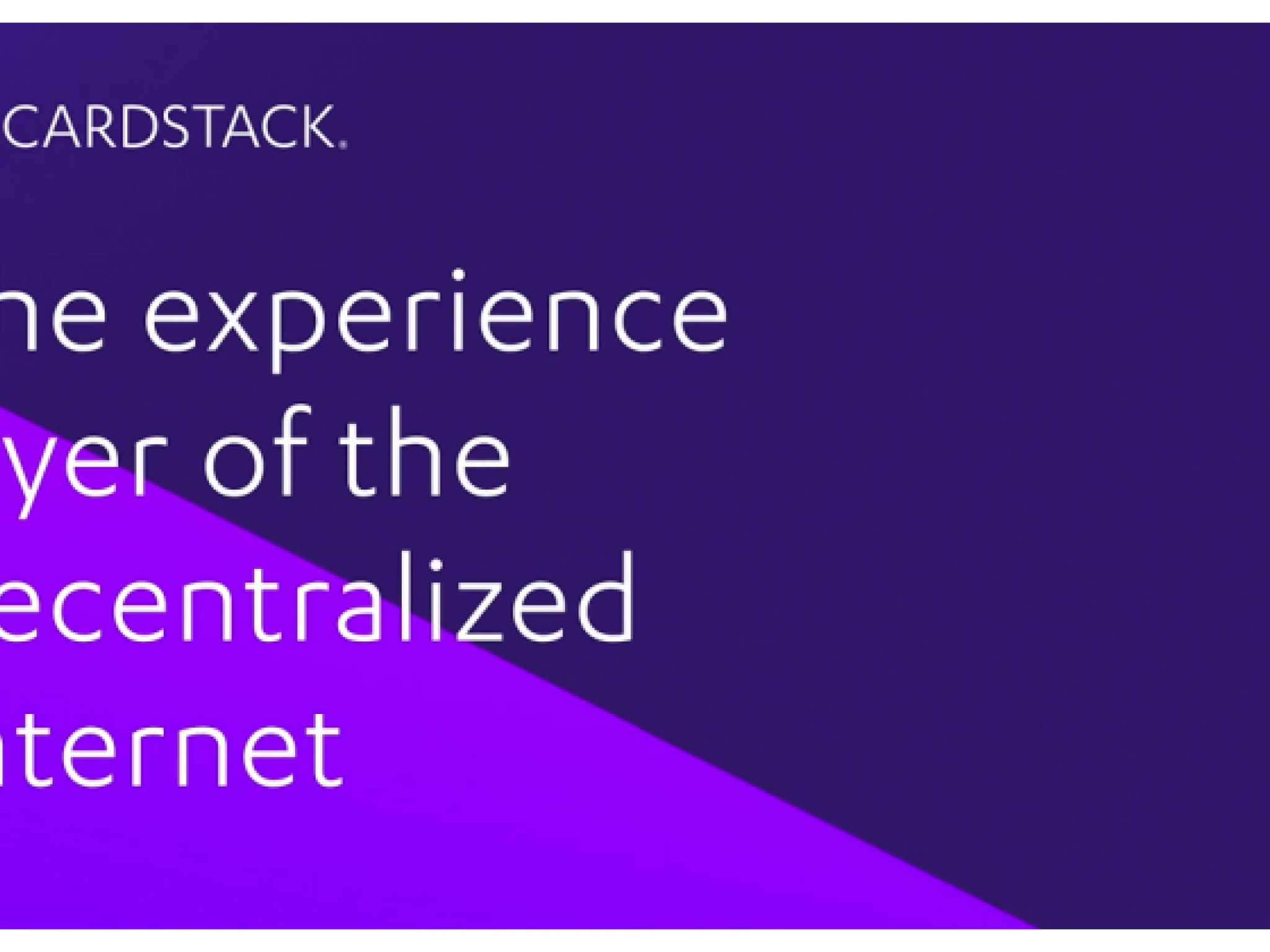
Web1 allowed for the ability to read. Web2 allowed for the ability to read and write. Web3 allows for the ability to read, write and own.
Essentially, Web3 is the next iteration of the internet, and it will be comprised of decentralized protocols and tokens.
To learn more about unlocking the doors to Web3 for everyday people - so that anyone can build apps, create content and get paid in decentralized ways, Benzinga spoke with Cardstack founder Chris Tse.
Benzinga: Hi Chris, nice to meet you. Care to kick it off with an introduction?
Chris Tse: I’ve been a technologist in the media space for most of my career. I’ve worked for bigger companies and startups, sold companies, and worked in an innovation role, last.
Moreover, when the Ethereum (CRYPTO: ETH) project got started, I met with the team – Vitalik Buterin and Joseph Lubin – and they were doing their initial coin offering (ICO). We connected over dinner, and they told me about the model called cryptocurrency.
I’ve been hooked ever since. I built a commercial platform called Monegraph, which was probably the first commercial non-fungible token (NFT) marketplace ever made.
It was Kevin McCoy, who invented the concept of NFTs, that recruited me to join his company and build this commercial version of Monegraph.
How did Cardstack happen?
In wanting to fund open source development in crypto, I started Cardstack which treats software, itself, as an NFT of sorts.
Instead of thinking about [software] as a one-time sell, think about it as a rental-type of royalty, and that is aligned with my background working in media and intellectual property licensing.
How does Cardstack work?
If you think about Software-as-a-Service (SaaS), most of the time you log into a website – Salesforce.com Inc (NYSE:CRM), HubSpot Inc (NYSE:HUBS), or Slack – and it is a subscription.
With that subscription, you get a bunch of features and tabs, but the traditional approach of thinking about monetizing software and subscriptions is not enough.
The most important part of Web3 is … breaking down the silos of these logos like Salesforce and Microsoft Corporation (NASDAQ:MSFT) and then putting them back together. The way we do it is through smart contracts.
Cardstack is working on the application framework to create modular user interfaces; so, I have this UI that does a swap, but I can embed that swap inside a larger workflow that can be part of some sort of trading strategy.
Another aspect of Cardstack is building economies.
That is concerned with payments. Do you want to create your own kind of stablecoin-backed economy like Robux? How do you build a store, and how does a store figure out how much it is owed? How do you collect and pull revenues?
Tell me about your team and things you are working on together?
We’re a team of 25. About half of our team is engineers, and we’re working with teams like Chainlink (CRYPTO: LINK) around payments, for example.
What’s your focus right now?
So, we have built a wallet. It’s kind of like Venmo or WeChat Pay for crypto that uses a stablecoin and Layer 2 and is more practical due to cost.
We have shipped an Apple Inc (NASDAQ:AAPL) iOS and Alphabet Inc-owned (NASDAQ:GOOGL) (NASDAQ:GOOG) Google Android wallet to the app stores called Card Wallet.
We really just want to be able to make a really good payment system, end-to-end, for merchants and customers, so that whether the merchant is selling a cup of coffee or software upgrade templates, it’s the same payment mechanism.
Tell me about Web3 rewards systems.
We’re building a reward protocol where we look at your spending history, through spend mining. Instead of looking for liquidity, we look for people who are spending, adding value, or bring cash in fiat value to the network, and we give them tokens.
For instance, when you’re paying a person or buying a cup of coffee, you may be earning stablecoins [like] additional credit card points.
In blockchain, these calculations are expensive and slow. So, we want to use the on-chain transaction just for the primary payment. And then, do these royalty distribution or reward distribution calculations after the fact.
So, you get continuous earnings based on more activity and valuable business transactions on our network.
How are you getting the message out there? What’s your on-ramp?
We’re doing it through product-led growth.
Imagine you’re an influencer, and you want to get a donation. Today, you can put a form and GoFundMe on your Linktree, and post that to your Instagram profile.
But, if you say, let’s do that through Web3, MetaMask, and Ethereum tokens, nobody is going to do that. So, we’re launching this product called Card Space, a Linktree replacement.
We’ll give you the same features as Linktree, but in there is a QR code, and the ability to connect to your wallet.
Six months to a year from now, where do you see the company?
First, we’re in working groups and helping come up with policy directions and suggestions for governments around the world. Ultimately, we want the United States to be in the leadership position in this technology.
Additionally, a lot of the use cases we’re focused on are media, buying and selling software and media associated with that software, allowing people to publish their own intellectual property, and collecting revenue.
I imagine this technology being more powerful and useful to people. They have more ability to shape the software, instead of just being a user in their Web2 subscription service. They can actually contribute to the open-source, suggest features, and have a more healthy relationship.
Our perspective is to ship software, show that it works, and use that as efficacy to get more people to buy into our vision that Web3 is about use case and application, not just app infrastructure and trading.







